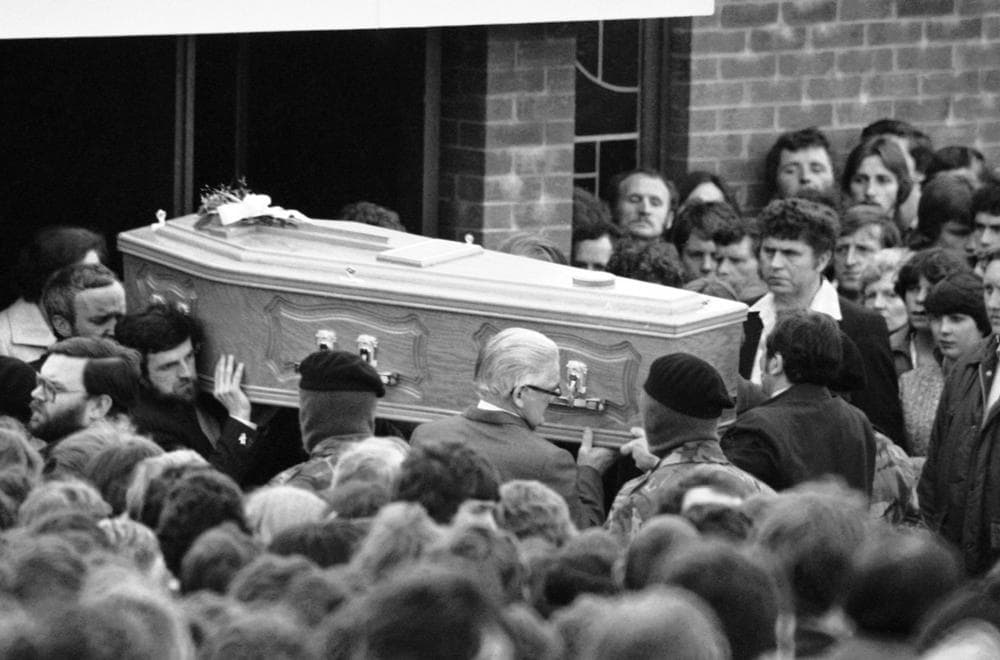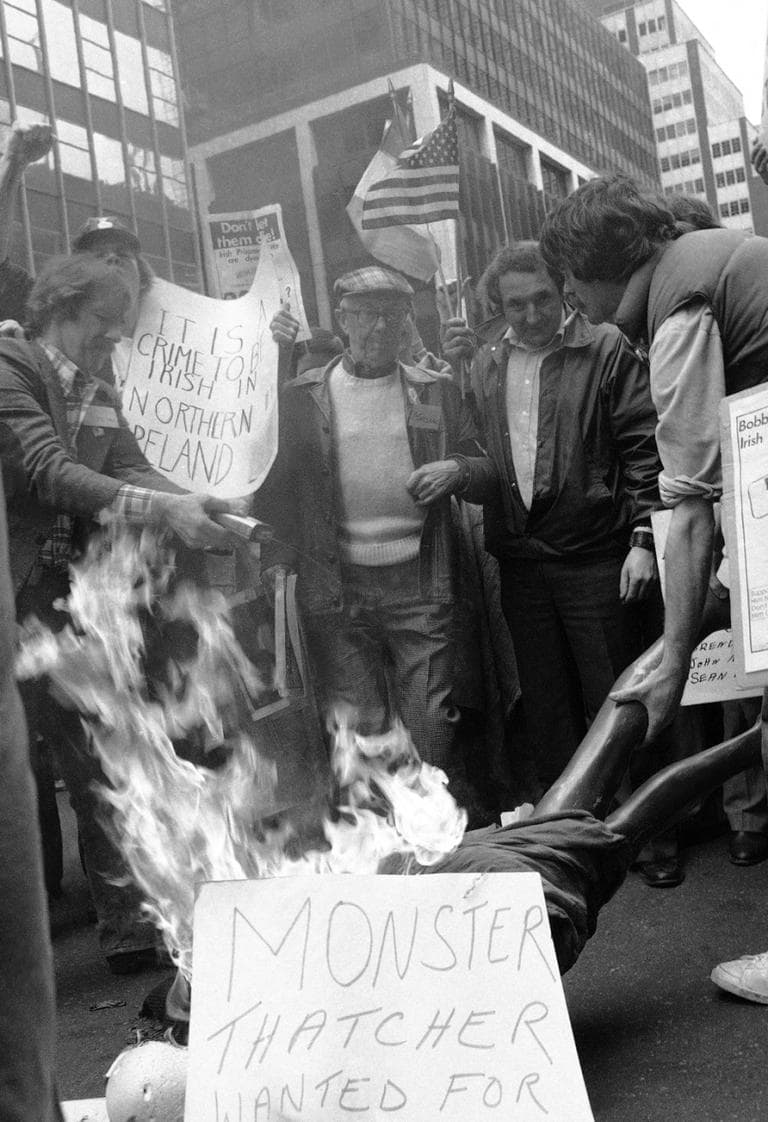Advertisement
Margaret Thatcher And The Hunger Strikers

Former British Prime Minister Margaret Thatcher, who died yesterday at the age of 87, took a hard line against the young men who were being held prisoner by the British government because of alleged crimes they committed as members of the Irish Republican Army.

They were fighting against British rule in Northern Ireland and they wanted political status as prisoners, which Thatcher refused to grant.
According to a Boston Globe piece by Kevin Cullen, Thatcher once told a priest from Northern Ireland the young men were determined to kill themselves to prove how tough they were.
Ten hunger strikers eventually died.
Cullen writes, "Thatcher’s intransigence drove many young men into the waiting arms of the IRA. She was one of the IRA’s best recruiters. She pushed the end of the war back at least 10 years and consigned a generation to conflict."
Thatcher's friend President Ronald Reagan ultimately convinced her she had to work with the Irish.
The agreement she signed with Irish leaders in 1985 did lead to the Good Friday Agreement of 1998, and a new era of Anglo-Irish relations.
Guest:
- Kevin Cullen, columnist for The Boston Globe. He's also co-author of "Whitey Bulger: America's Most Wanted Gangster and the Manhunt That Brought Him to Justice." He tweets @GlobeCullen.
This segment aired on April 9, 2013.